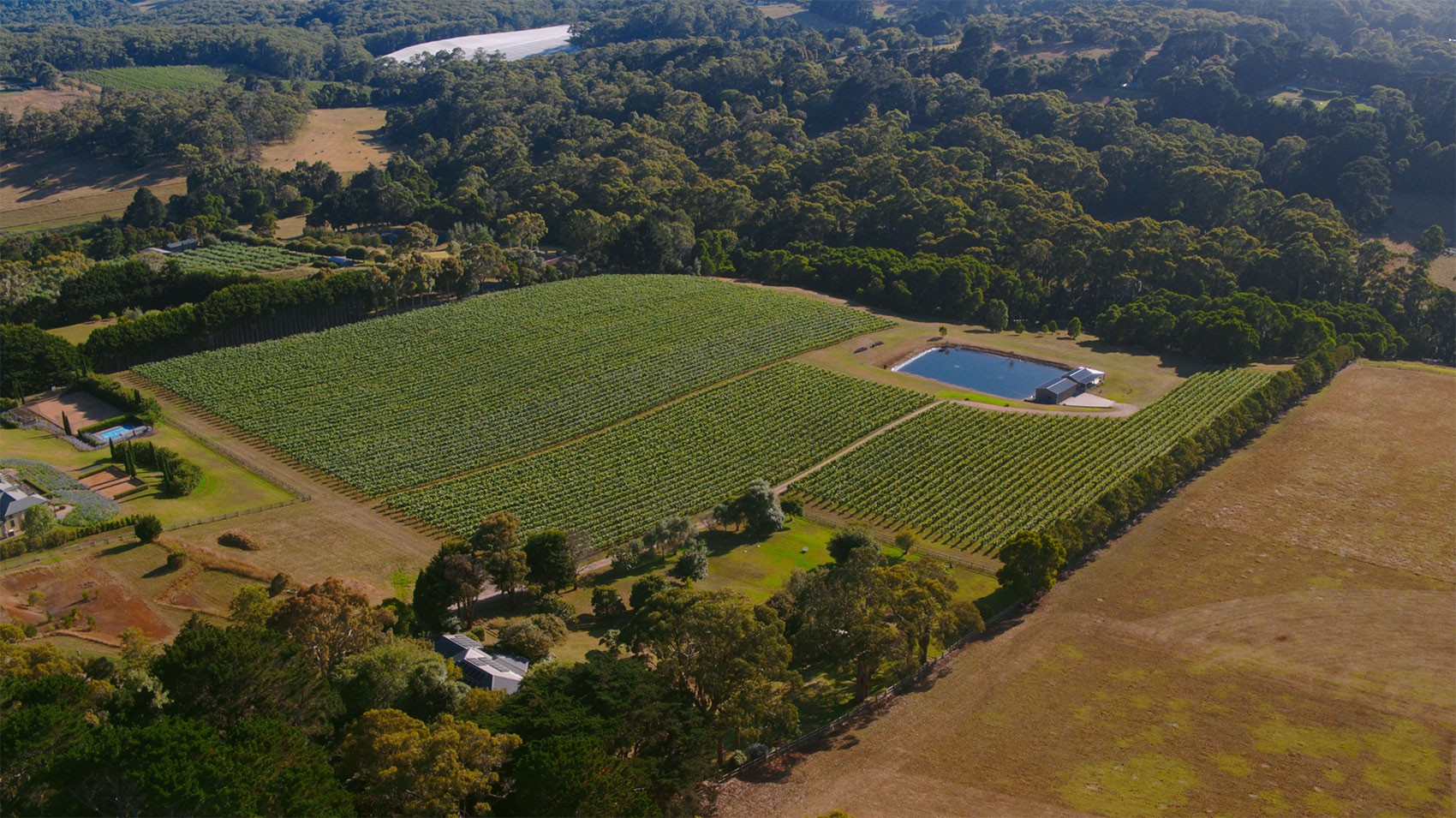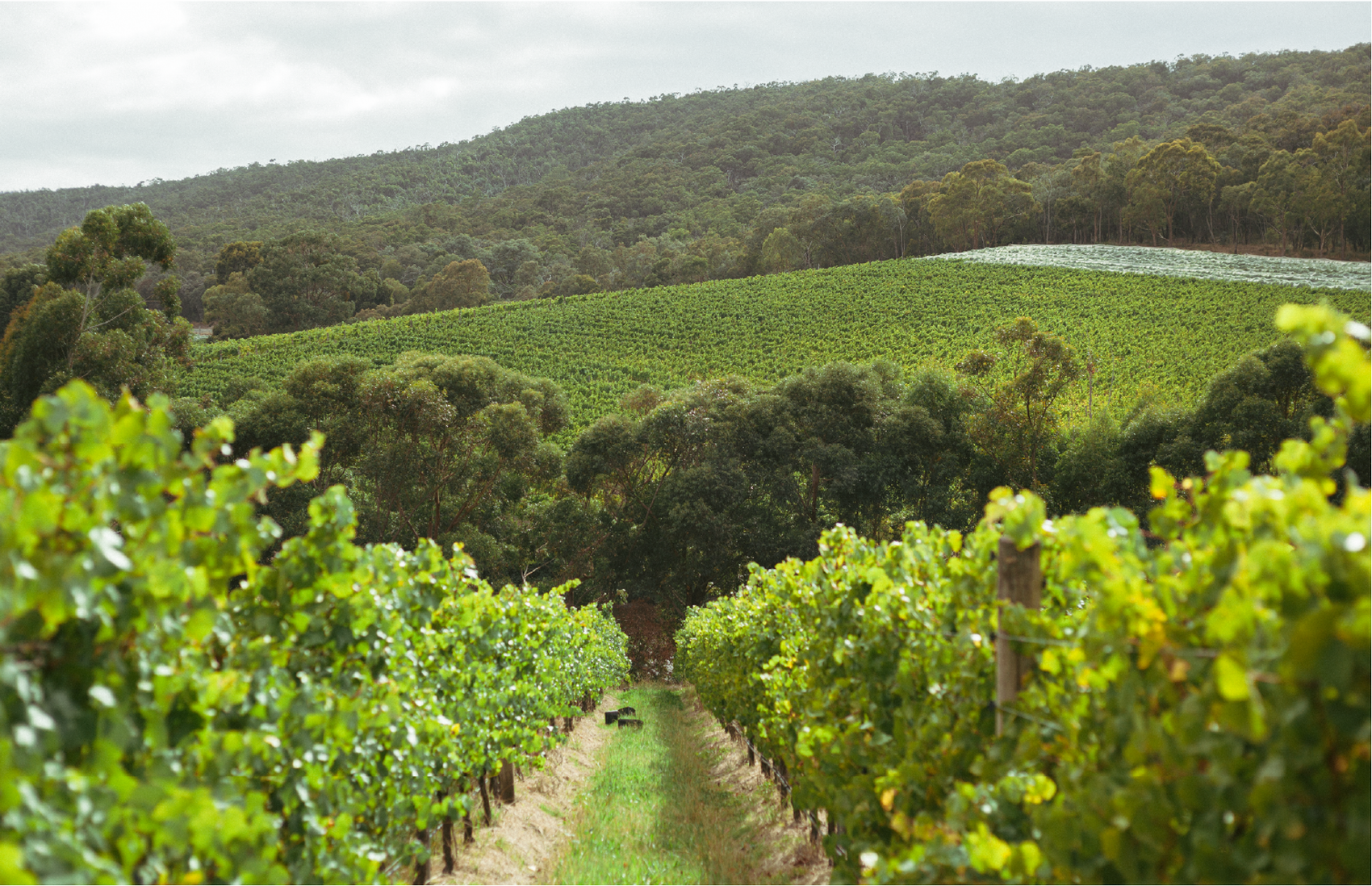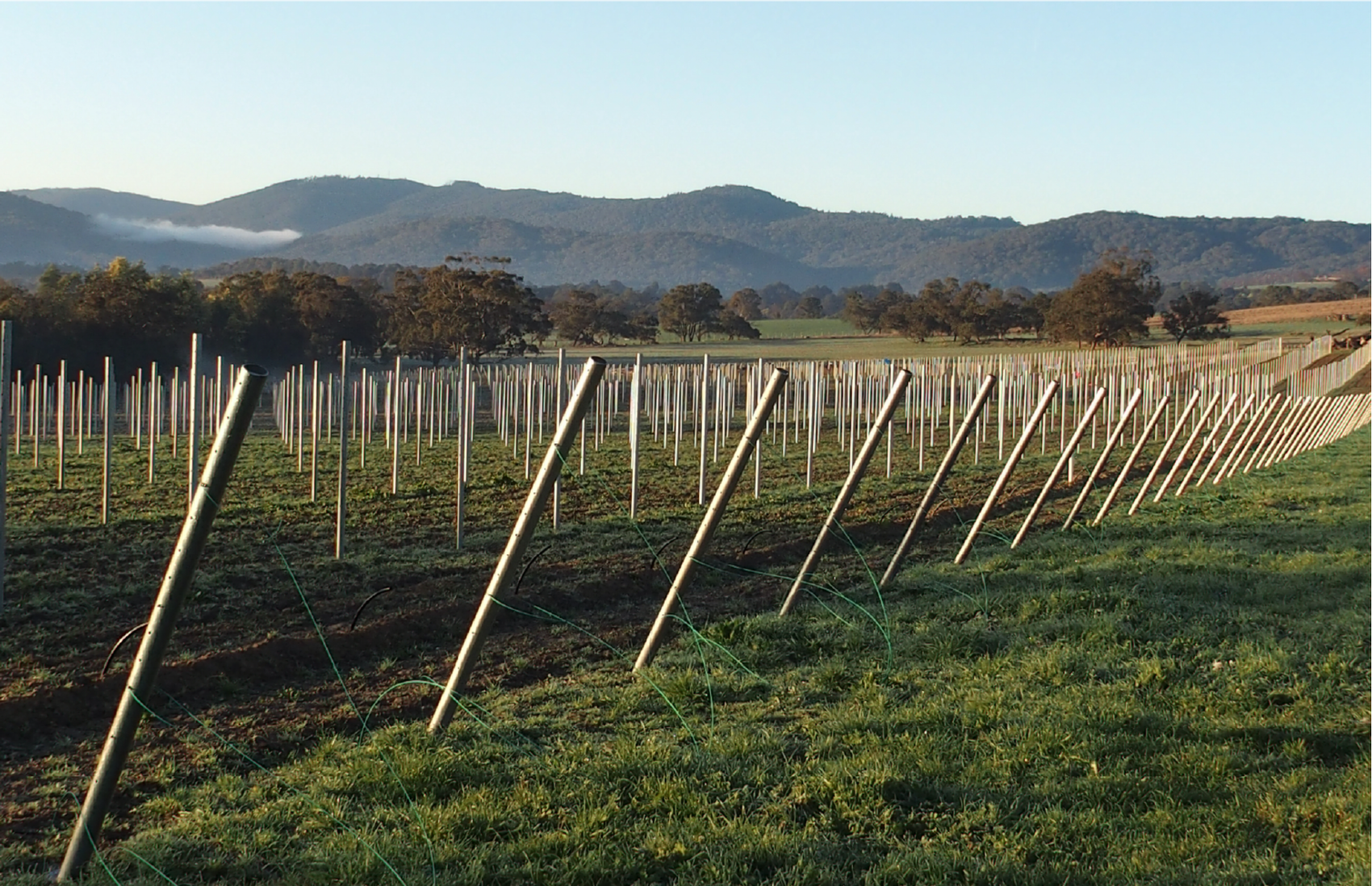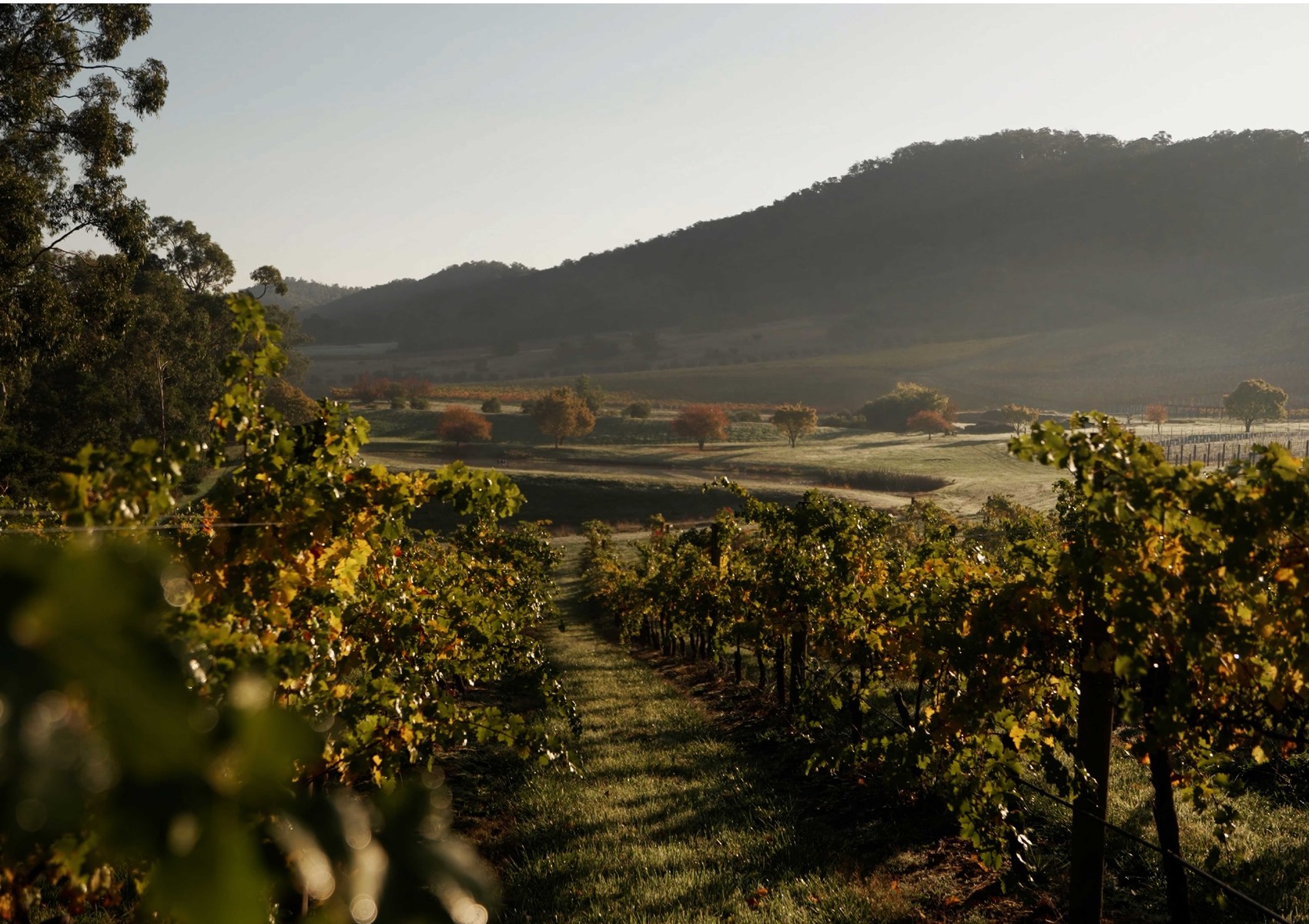
Ghostgum is planted on a gentle, east-facing slope in Main Ridge, one of the highest elevation growing areas of the Mornington Peninsula. Here we farm 5.5 hectares of mature Pinot Noir and Chardonnay vines. Traditionally the property was orchard land – mostly cherries and apples – before being turned to vegetable growing and cattle grazing in the later part of the 20th century. Vines were first planted here in the early 1990s, which form part of the current vineyard today.
The vineyard soils are red ferrosols – deep, friable, and porous red soils that can also retain enough water to avoid having to use irrigation. These soils are basalt derived where the odd ‘buckshot’ chunk of ironstone can still be found.
Established: 1990
Aspect: east
Elevation: 174m
Soils: red volcanic loam
Size: 5.5ha
Yield: appx 3 tonnes p/ha
First vintage: 2021

Our St Andrews vineyard is tucked away in the rolling hills of the Nillumbik Shire. Located in the northern part of the Yarra Valley, it sits around 240m above sea level. This vineyard has a multitude of aspects, soil types and clonal variation for both Chardonnay and Pinot Noir.
The soils are derived from ancient marine sediments. The weathering of this ancient basement has resulted in a thin veneer of skeletal duplex soils. A high proportion of bedrock fragments ensure excellent texture and a small proportion of clay provides just enough water holding capacity.
Established: 1984
Aspect: east, west, north, south
Elevation: 240m
Soils: grey clay loam
Size: 14ha
Yield: appx 6 tonnes p/ha
First vintage: 2024

Dawn Chorus is 28km south of our Healesville winery, set among the luscious green hills of Yarra Junction. This part of the Upper Yarra is home to some of the highest elevation and coolest sites in the Yarra Valley. Here we will be planting out Pinot Noir and Chardonnay, as well as small plantings of Nebbiolo over the coming two years.
A top layer of sandy loam sits above light to medium clay, creating an ideal balance between drainage and water retention. This structure allows vines to access essential moisture and nutrients while naturally limiting excessive vigor, promoting the development of high-quality grapes.
Established: 2021
Aspect: east
Elevation: 176m
Soils: grey clay loam
Size: 18ha
Yield: appx 6 tonnes p/ha
First vintage: 2021

Lightfall is our home vineyard and surrounds our winery in a quiet valley close to the Healesville town centre. Originally planted in the early 1980s this predominantly west facing site produces wines with great depth, power and concentration.
These soils offer an ideal balance of water retention and drainage, ensuring steady vine growth while preserving the delicate acidity and structure essential for high quality Pinot Noir and Chardonnay. The interplay between fine clay particles and organic matter enhances the soil’s ability to hold and release nutrients, promoting balanced vine growth.
Established: 1980
Aspect: west
Elevation: 125m
Soils: yellow clay loam
Size: 10ha
Yield: appx 5 tonnes p/ha
First vintage: 2024